The biggest bugger about this Sperrgebiet thing is the inaccessibility of places: roads to places like Oranjemund and Luderitz are one way in and same way out… a few 100’s km there and back, because the mines don’t let you connect the dots between Oranjemund, Luderitz and Walvis Bay along the most direct, straight line: along the coast. You are forced to drive in and out! Which adds up to heaps of kilometers.
So yes, we eventually left Oranjemund and headed back inland. We filled up with diesel in Rosh Pinah and continued towards Aus. A fair distance out of Rosh Pinah we turned right onto a dirt road to explore the Huib Hoch Plateau. (Yes… everything in this place is deeply rooted in its Germany history: town names, street names, even mountain names)
We camped somewhere in a dry riverbed surrounded by rocky mountain slopes dotted with quivertrees and an elusive but curious buck or two.
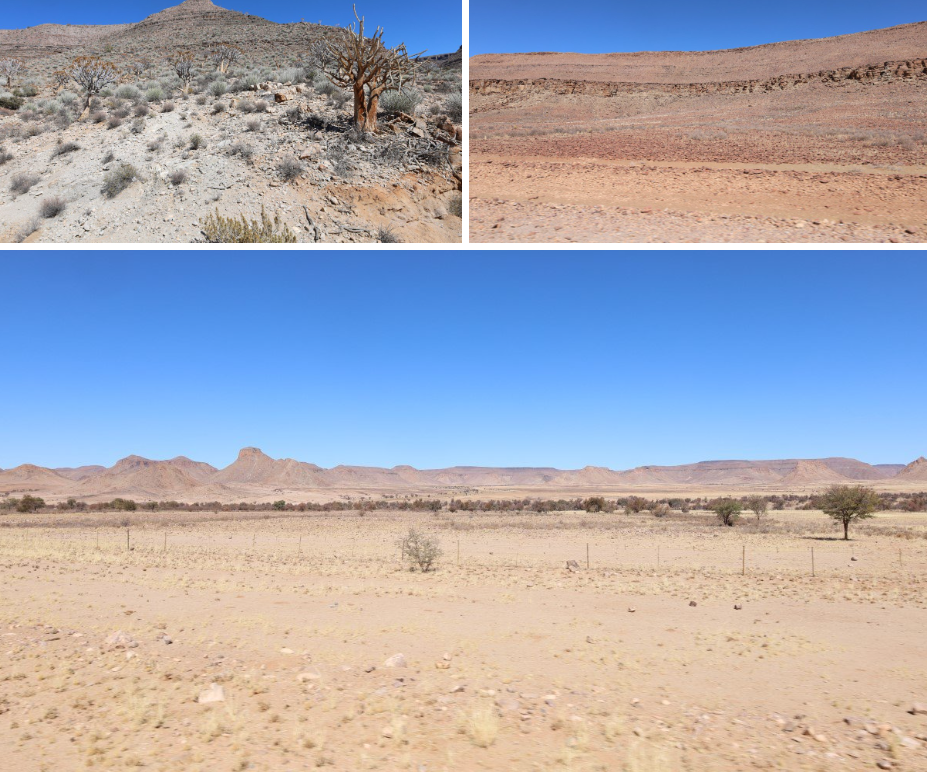

Next morning we continued towards Luderitz, but Gavin and Lee kept an eye on the weather forecast. They were worried about the wind. They had visited Luderitz many moons ago and had their windscreen virtually sandblasted by the desert sands blowing around at gale force speeds. Not taking any chances, we parked at a roadside rest stop about 60km before Luderitz, had to hold on tight to prevent doors being blown off and called it a night. We shared cake, courtesy of master baker Lee, champagne and a good bottle of wine for my birthday and life was good!
When my brother in law Gerhard sent me a birthday sms and heard we were on our way to Luderitz, he warned for wind… Luderitz could be very hectic – windwise!
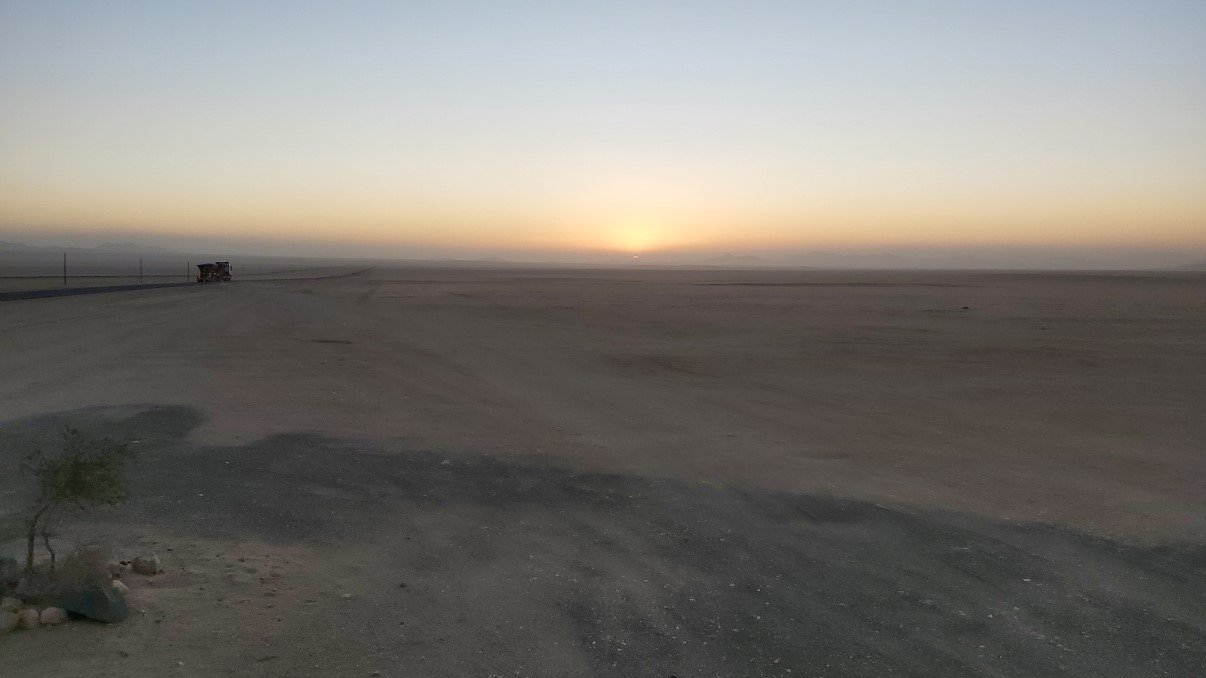
During the night we had several big trucks pulling in and leaving at various times of the night like on a proper truck stop, but luckily I didn’t hear too much about that. I slept like a baby. Only heard them in the early hours of the morning.
After our morning cup of coffee and a hot breakfast, we continued to Luderitz. Traveling through the desert, we saw sand, sand and some more sand and we passed the odd forlorn railway station that had lost the battle with time and the elements. We saw signs warning for the prowling strandwolf brown hyena’s (brown hyena’s/beachwolf) and someone had added a relective red tongue and eye to the strandwolf sign. To make it more scary or threatening?
Another little abandoned house along the road had the sign ‘Grass Platz”. Later, at Kolmanskop, we learned that this was the actual spot where the first diamonds were found.
About 10 km before Luderitz, we had our first drive-by glance of the ghost town Kolmanskop and eventually arrived in Luderitz, with its feeling of grandeur with a Hollywood-like sign on the side of the mountain. We were pleasantly surprised how not-windy it was.
Gavin and Lee had made a quick stop at Kolmanskop to get some info and when we met again in town, we parked at the Luderitz ‘Waterfront’ and went for a short stroll onto the pier.
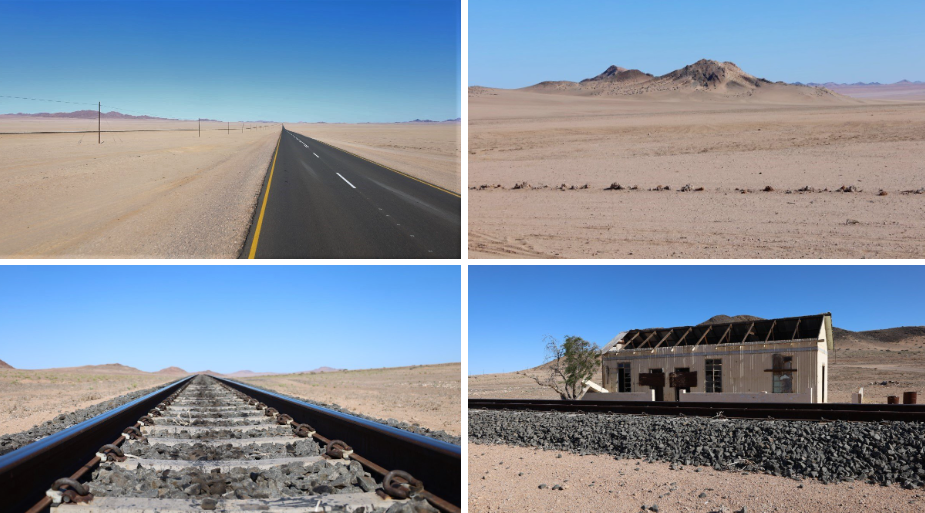

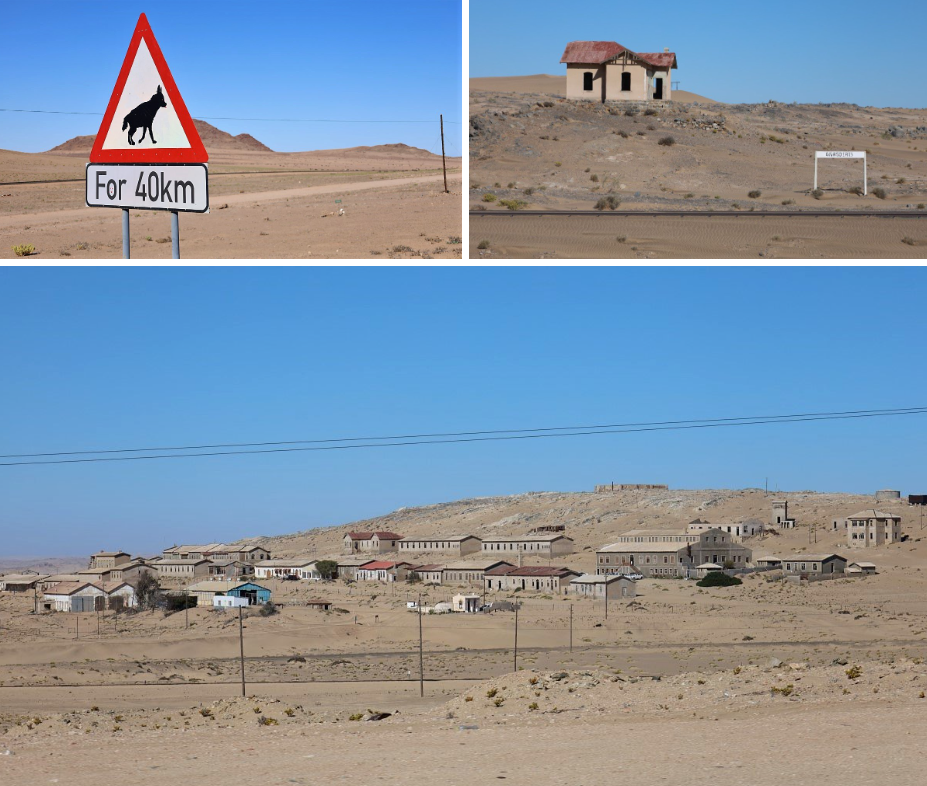
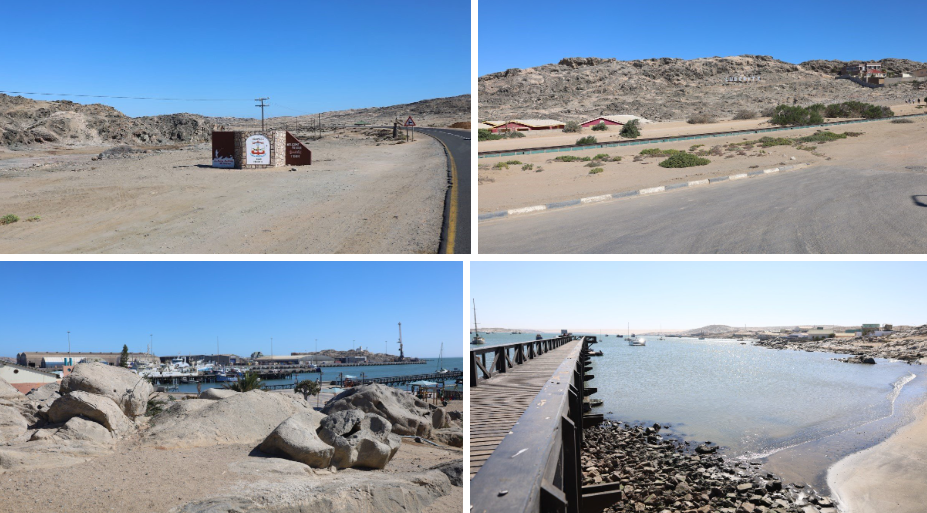
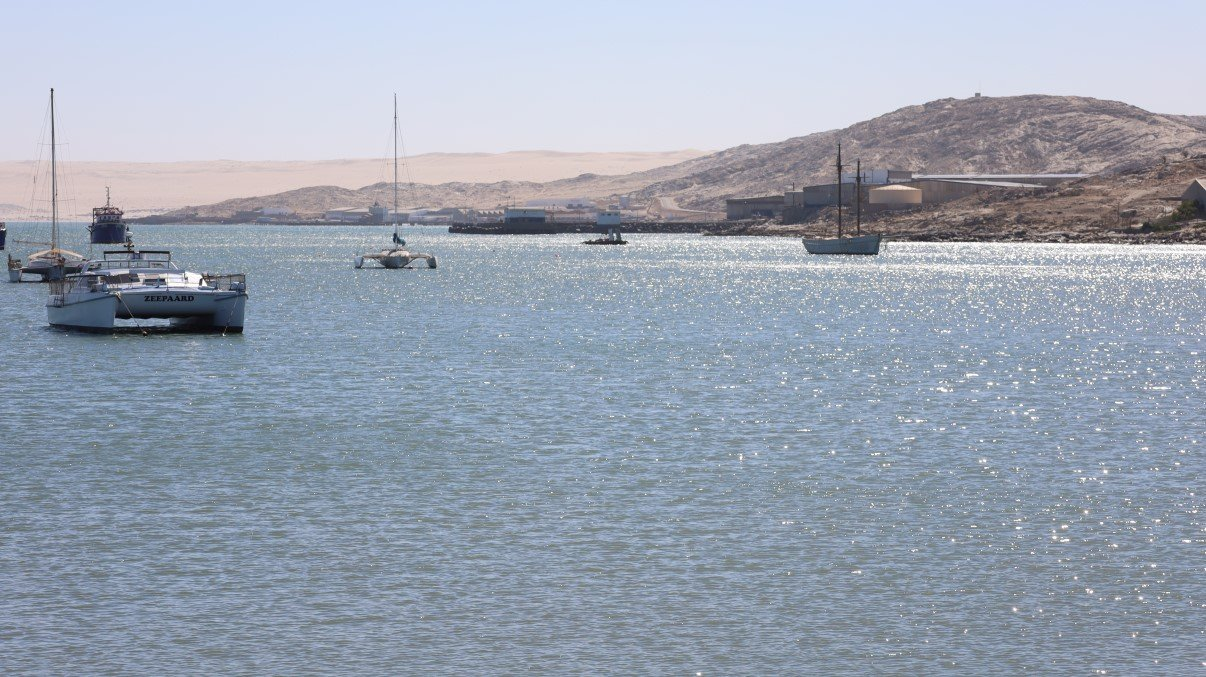
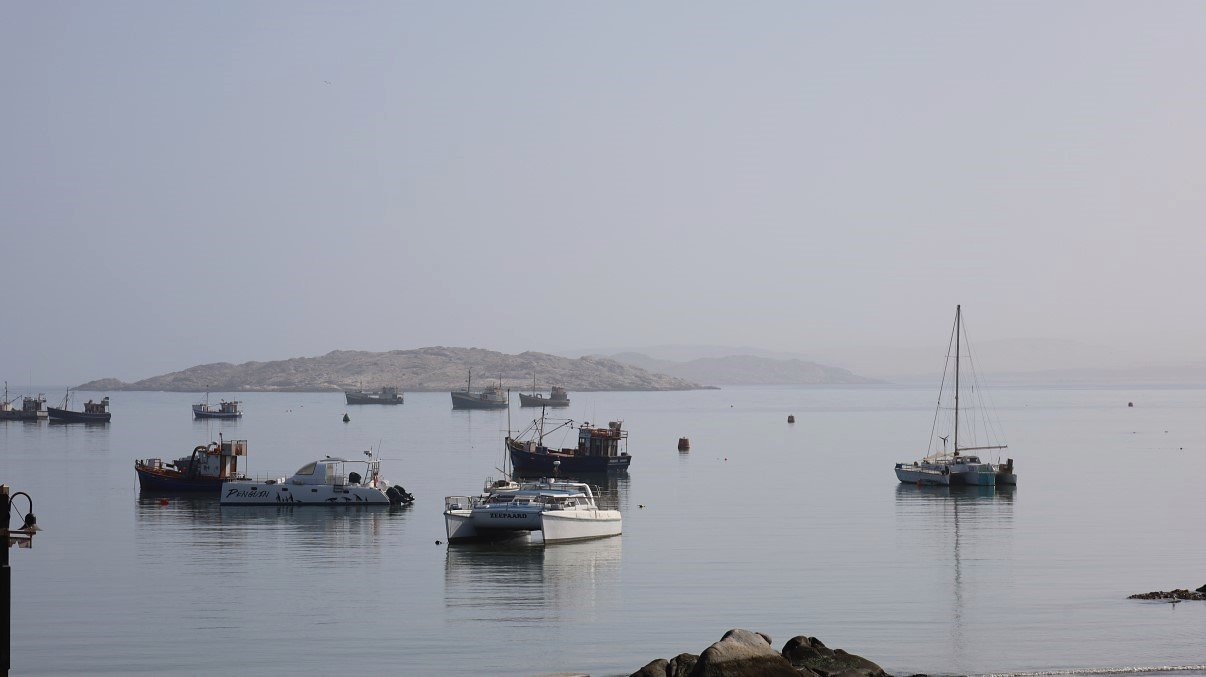
We took a drive to Agate Beach where we scoured the sand for agate: you never know if we might get lucky! The beach area is dotted with braai facilities and the odd ablution block, but unfortunately not well maintained.
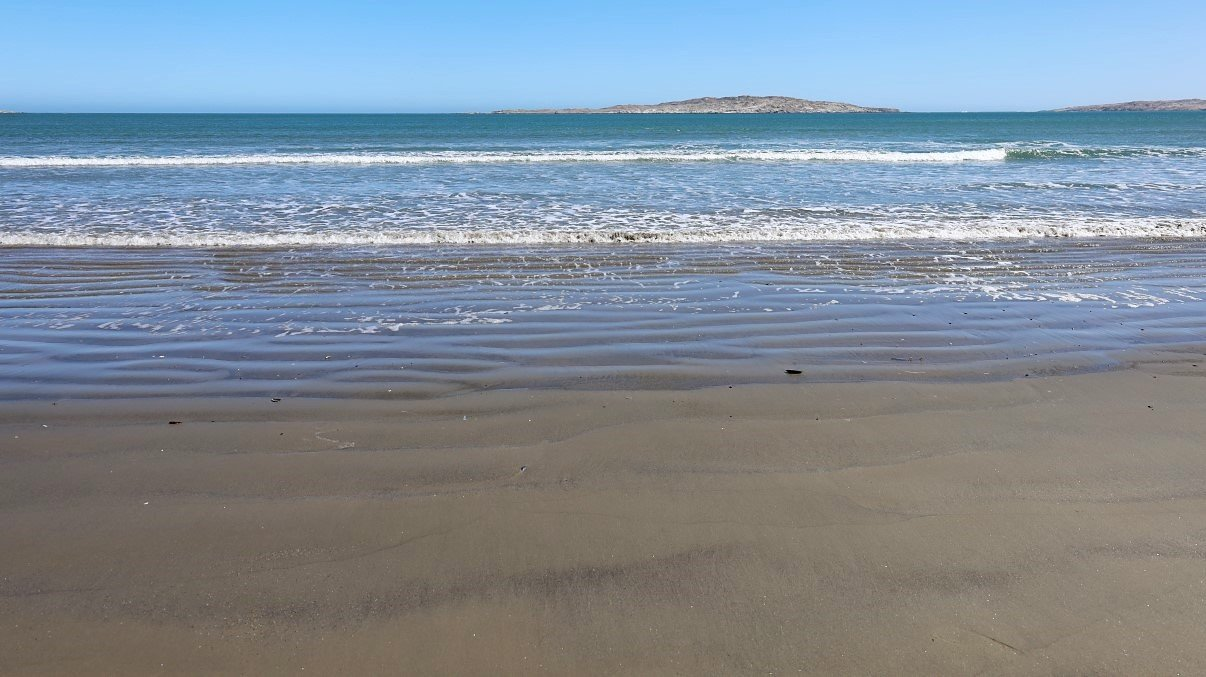
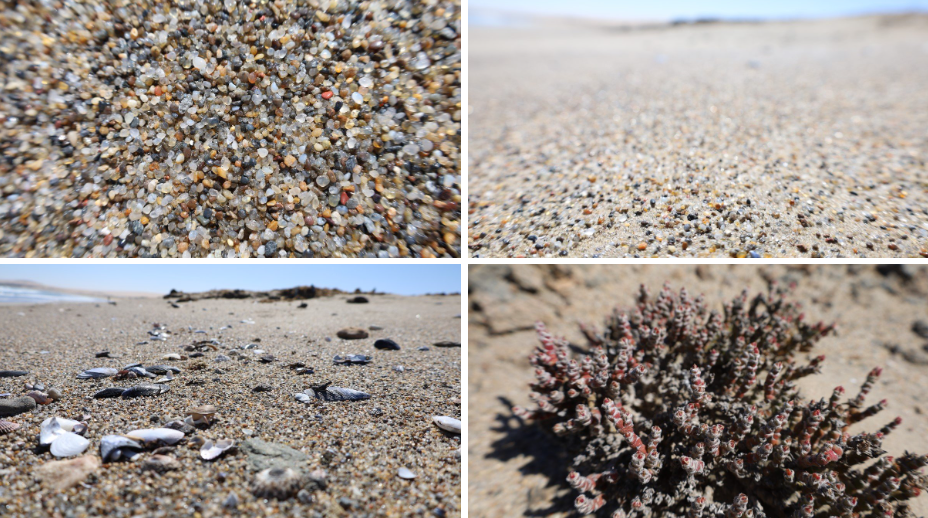
From there we drove to Diaz cross and the lighthouse, where the wind had started pumping in all earnest and I had to hold Stefaans hand out of fear of being blown off the steps to the cross. The bridge/walkway that’s supposed to make your walk to the cross easier is unfortunately also losing its battle against the elements. And looking at the waves slamming into the rocks a few minutes later when we were on top, it’s probably not so difficult to understand.
Up on the platform at the cross, a wind from hell was plucking us around quite seriously. The ocean broke on the rocks below with massive impact. We went back down and had lunch and a beer at Skip Skop coffee shop. A very nautical little lunch stop with very airy camping grounds! A weekend away here would definitely blow all your worries away! The camping seemed to have its own haunted house!
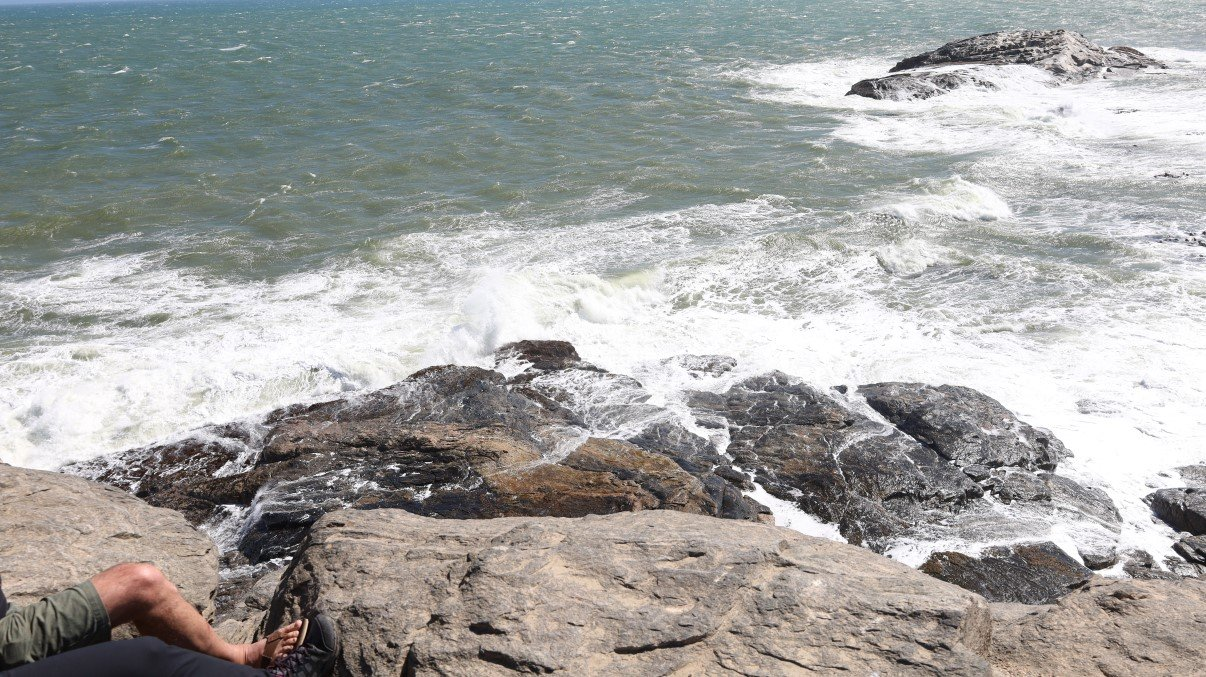
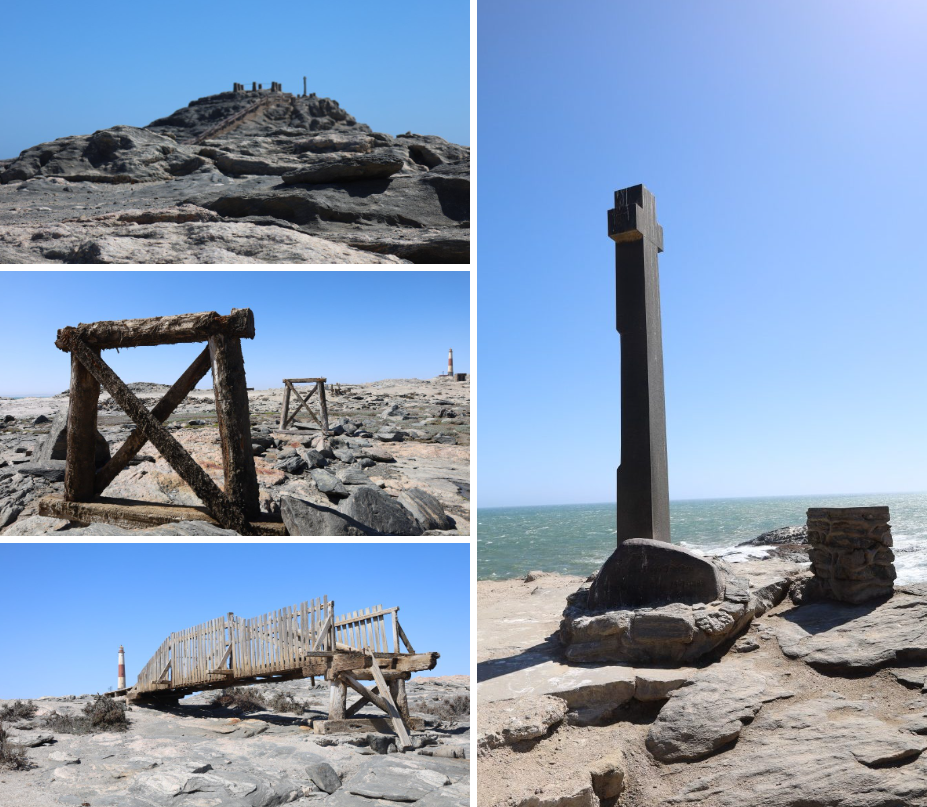
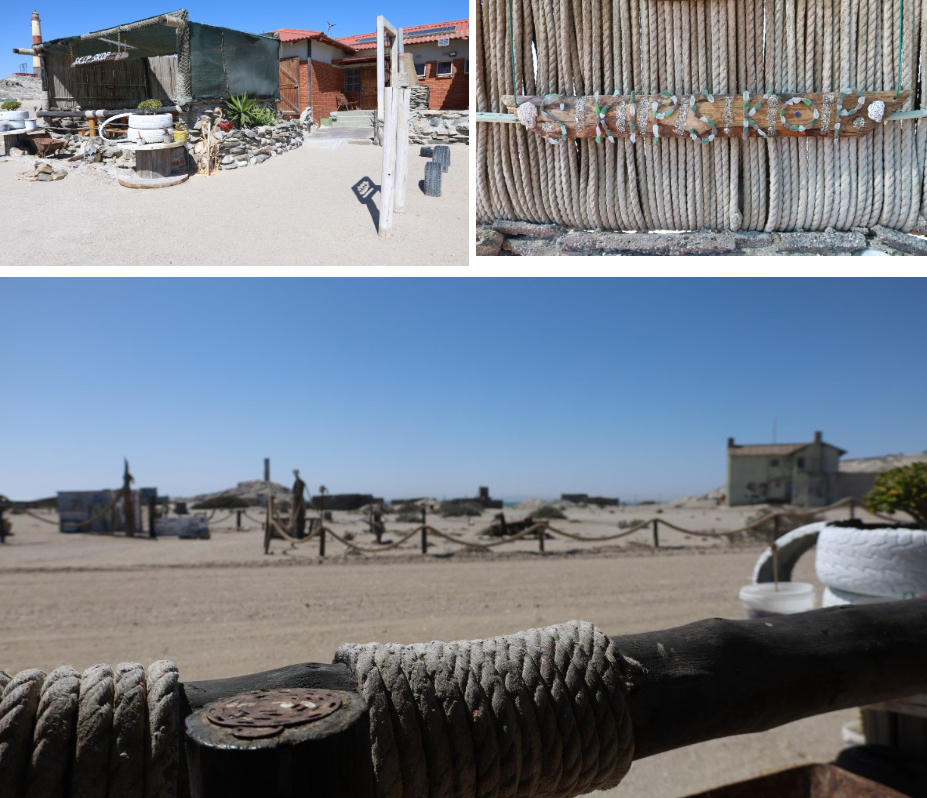
We drove further to Grosse Bucht. It seems that the Luderitz wind is so renowned that this is the spot were speed records in kite surfing are set!
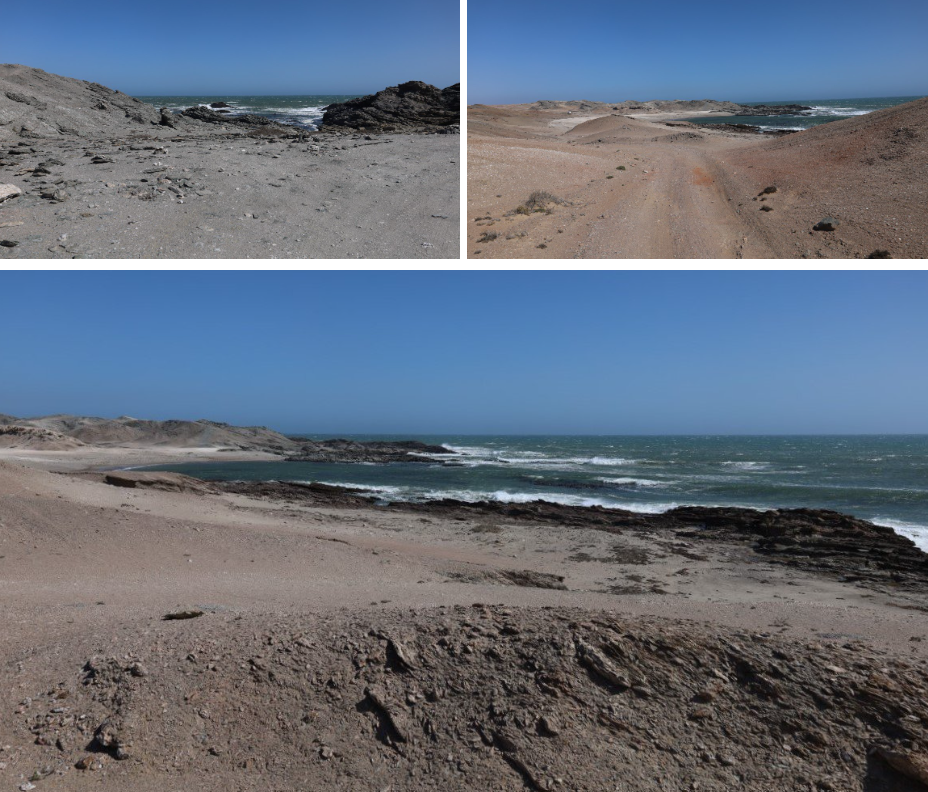
We eventually arrived back at the Luderitz Waterfront which proved to be a fairly busy and noisy road, but… we had internet. We spent time updating website, editing photos and stories and be pretty busy all around. We shared cooking duties and went to bed.
Next morning we went to Kolmanskop which had been one of our bucket list items since we had seen photos of Keith Alexander’s art in the early 80’s, when we had arrived in South Africa.
We went for a guided walk and after the talk the guide let us loose in town to take photographs. This is such a unique little place: a one street town with a few more scattered houses of the VIP’s in town and the not so luxurious quarters of the workers. It was quite fascinating to see they had an ice fabrik (every household would get a half a (big) block of ice per day for their fridge), to learn that the shop owner was a very wealthy woman (the furniture in her house reminded me so much of my grandparents of whom I still have a few pieces – and in the kitchen the same weetbix my kids grew up with) and hearing the interesting stories about the workers doing an army style ‘leopard crawl” over the sand because the diamonds just lay there for the picking! The not so nice side of that particular story goes that every worker who finished his 2 year stint was put on a castor oil diet so that any diamond he might have swallowed would still be coming out!
Heaps of interesting stories, and the walk between the deserted and windblown houses afterwards was kind of romantic. Maybe not so much romantic, but more melancholic. A great little town in its heyday, but when diamonds 6x bigger were found in Oranjemund, everybody left and the desert slowly reclaimed the town! Although a number of the houses are kept clean and sand-free to show what life was, the greater part of the buildings are left to the wind and the sand and make for amazing photographs.
Walking through the houses that have been left to the desert, gives this unreal feeling of desolation. Even though the photos show that once there was a vibrant little community living an everyday life in the desert, standing there on the veranda’s looking out over the endless sand landscape, the starkness of this place makes you stand still and catch your breath.
Seeing that Kolmanskop is slap bang in the middle of the Sperrgebiet, we were chucked out at 1pm: then the whole area goes in lockdown for visitors.
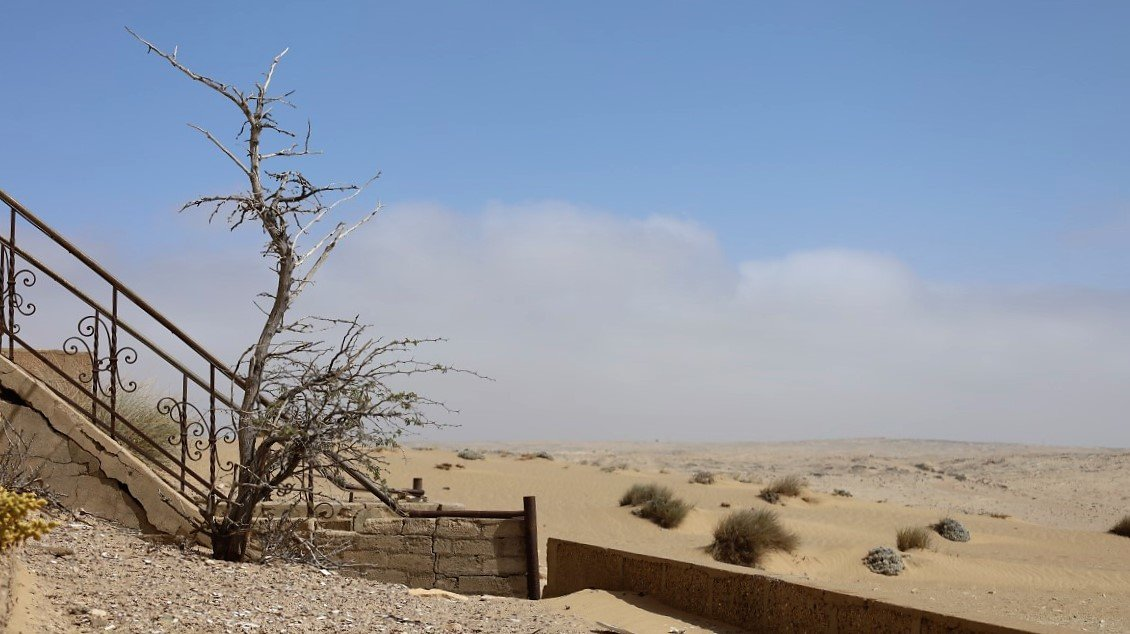

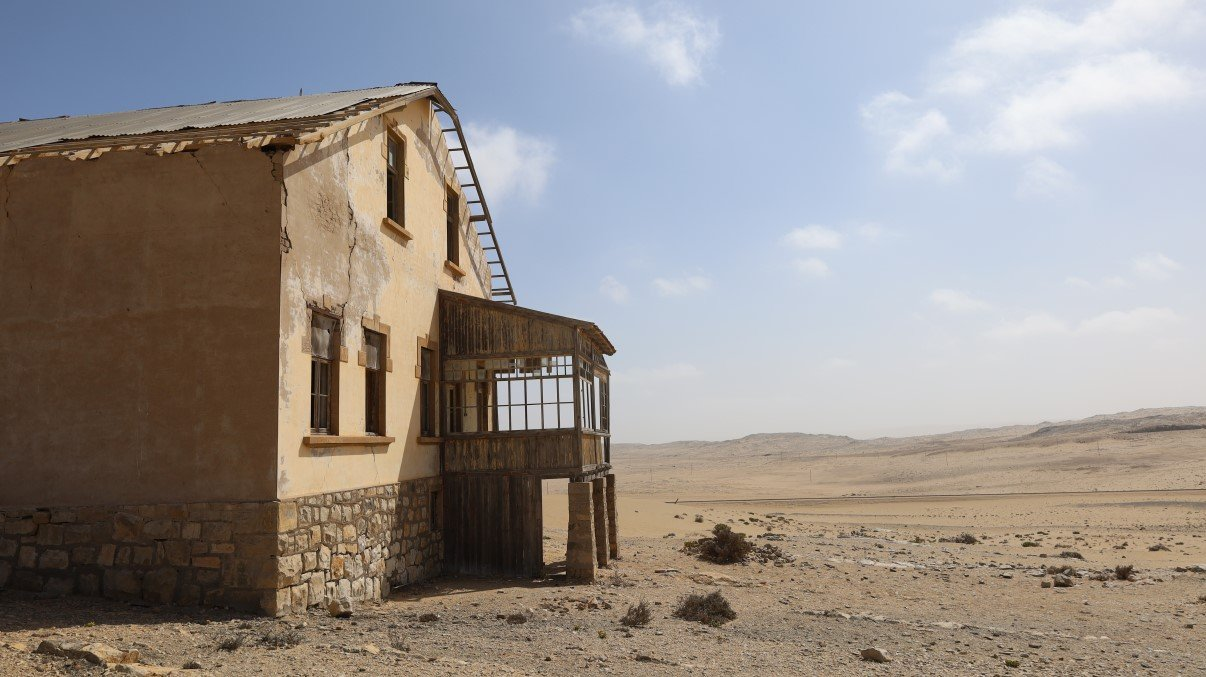
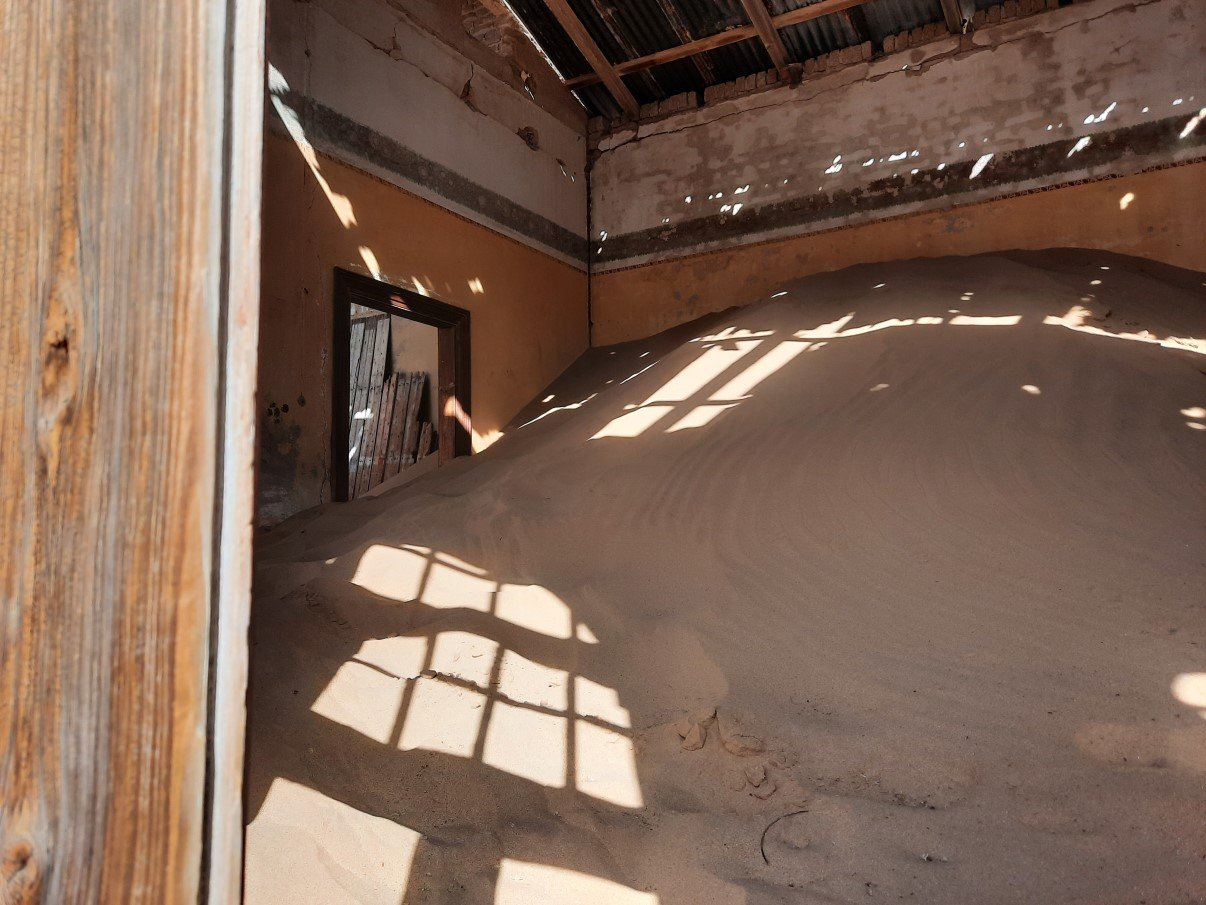
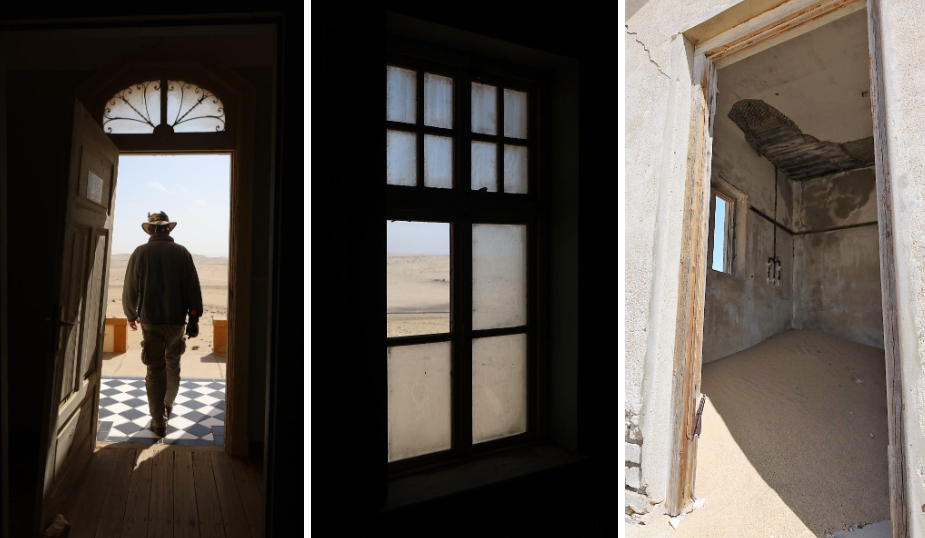
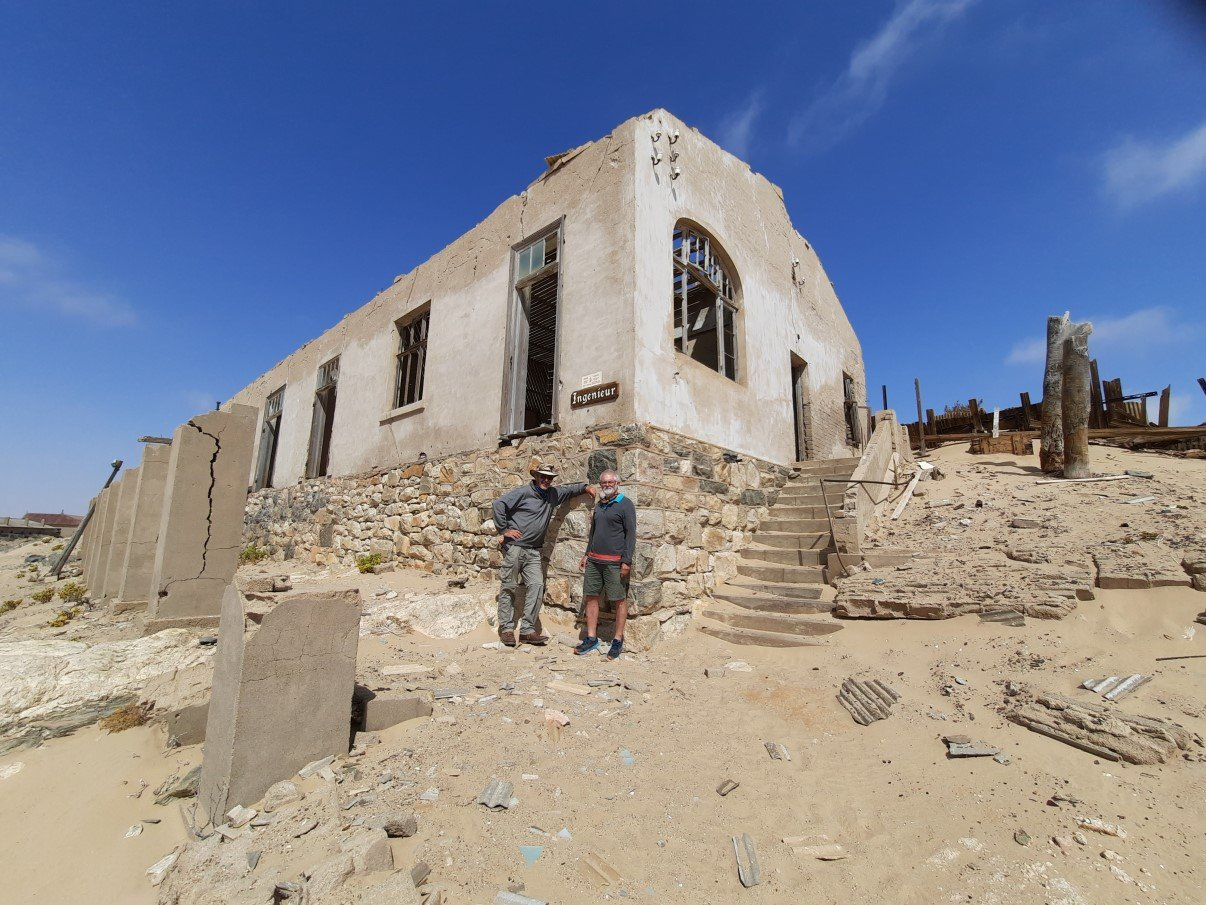
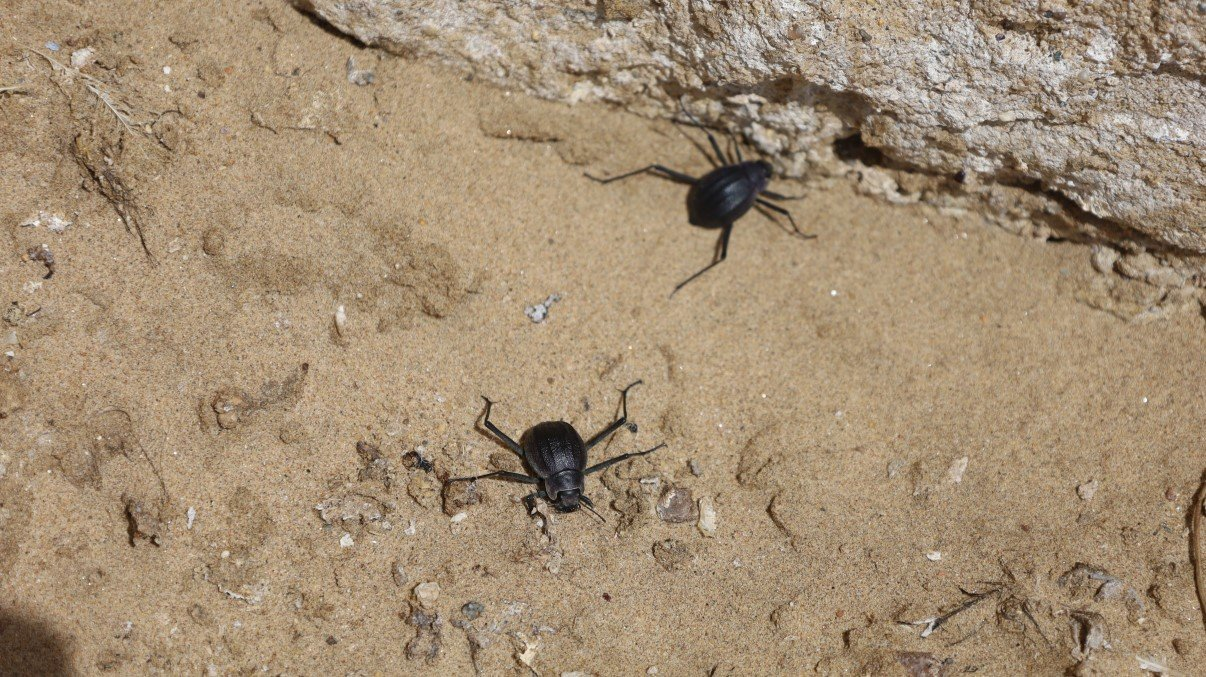
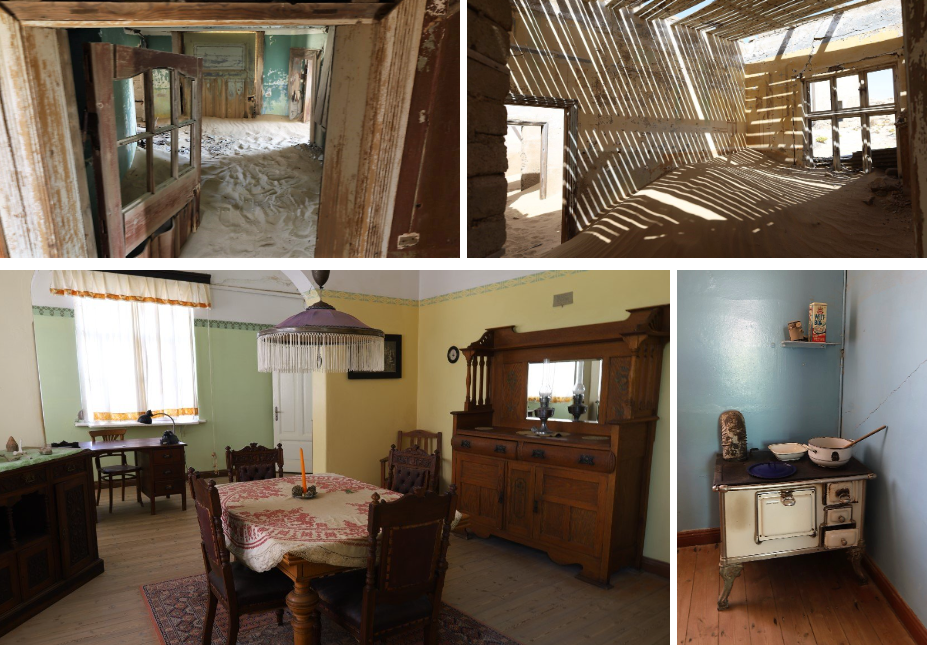
So we returned to town. On our way in I just had to take a photo of this barren and sandy soccer field in the middle of the desert a few km out of town. Amazing!
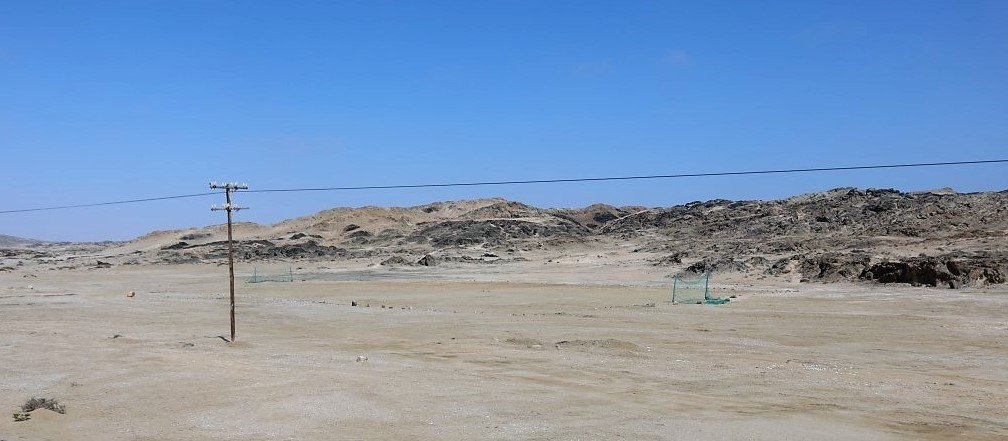
We went for a walk around town – a town with a definite German character- and popped in at the local museum. It is sad that so many touristy places are closed for covid but this one was open. We were lucky.
We realised too late we were not supposed to take photographs and just took a few. Two that stood out for me was the “bug board” as we had seen some of those bugs at the Kolmanskoppe houses. And the other photo shows the various natural colours (stone/clay) that indigenous tribes used for their rock paintings.
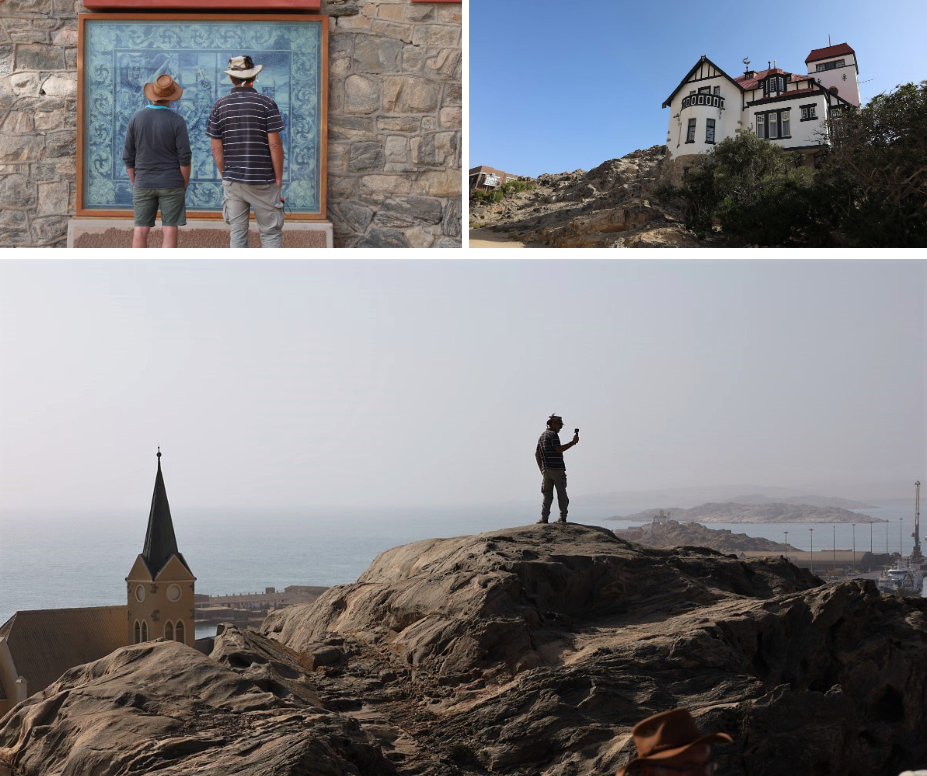
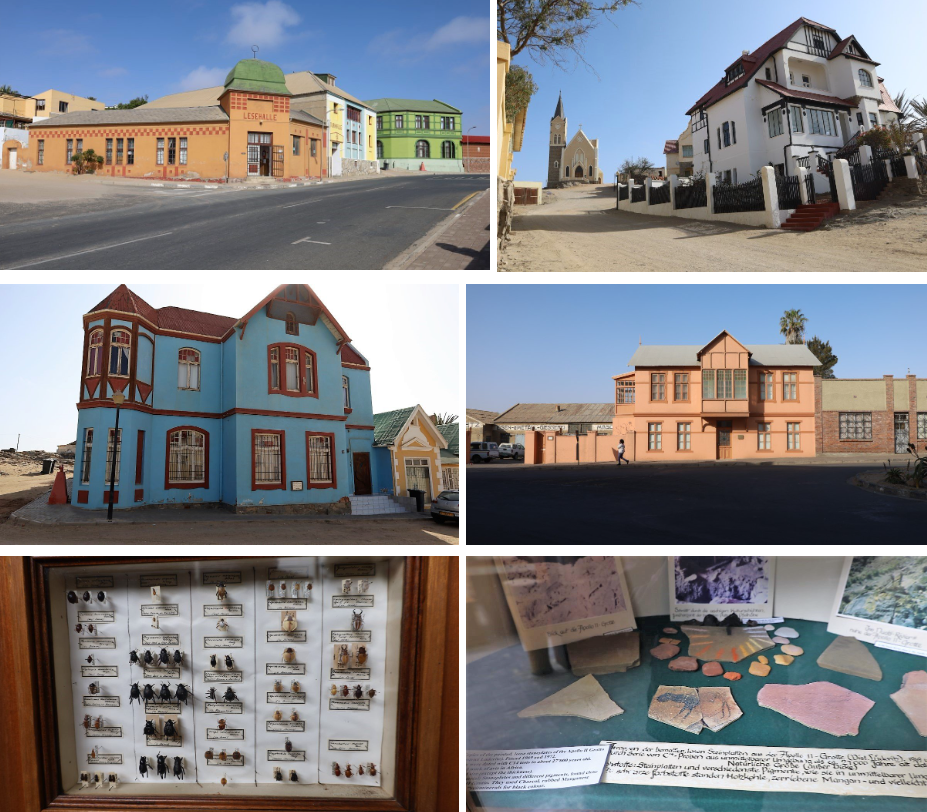
At our beloved parking spot at the Waterfront, we had a last beer at the yachtclub because the following day we would part ways.
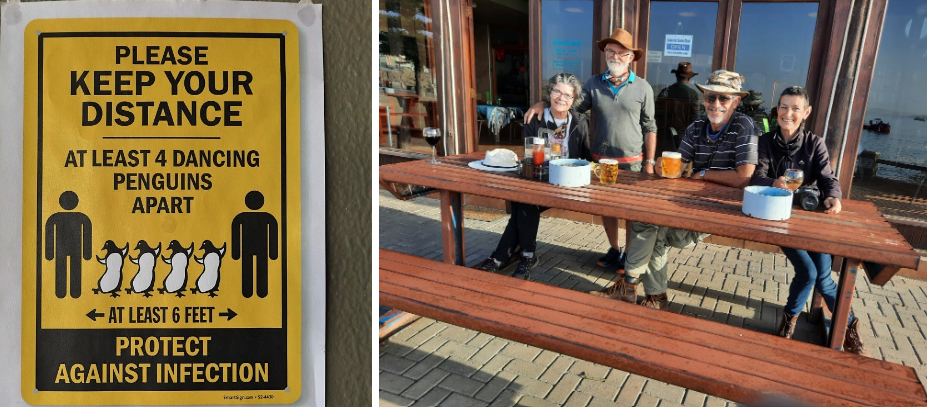
It seemed that Luderitz had been very graceful to us. Besides the gale force winds at the Diaz Cross, Luderitz’ weather had been very, very agreeable.
As we didn’t want to have another busy and noisy night, we decided to drive back to Agate beach for a braai and sleepover.

Next morning we met a security guard and we invited him for a cup of coffee. We had been picking up pebbles and stones along the beach and we asked him if he could tell us which of our stones were possibly agate. He couldn’t really tell us, but perked up when I showed him a handful of really tiny pebbles I had picked up 2 days earlier: that could be diamonds. That would have been about the right size of diamonds to have been found here! (If I would be that lucky!) We remembered the guide from Kolmanskop telling us exactly the same.
Seeing he looked pretty official and he seemed to be working for government, we asked him if he could arrange for us to go south to Pomona (another ghost town) and Bogenfells (a natural rock arch that stands about 50-60 meters high). We had considered wanting to go that way, but at a fee of R2000 per person, that was a definite no-go. We are prepared to some kind of fee to see special sights, but one has to be reasonable. He said he would enquire, but wasn’t sure. He would let Lee know. We had a leisurely breakfast, heard nothing and eventually decided to move on.
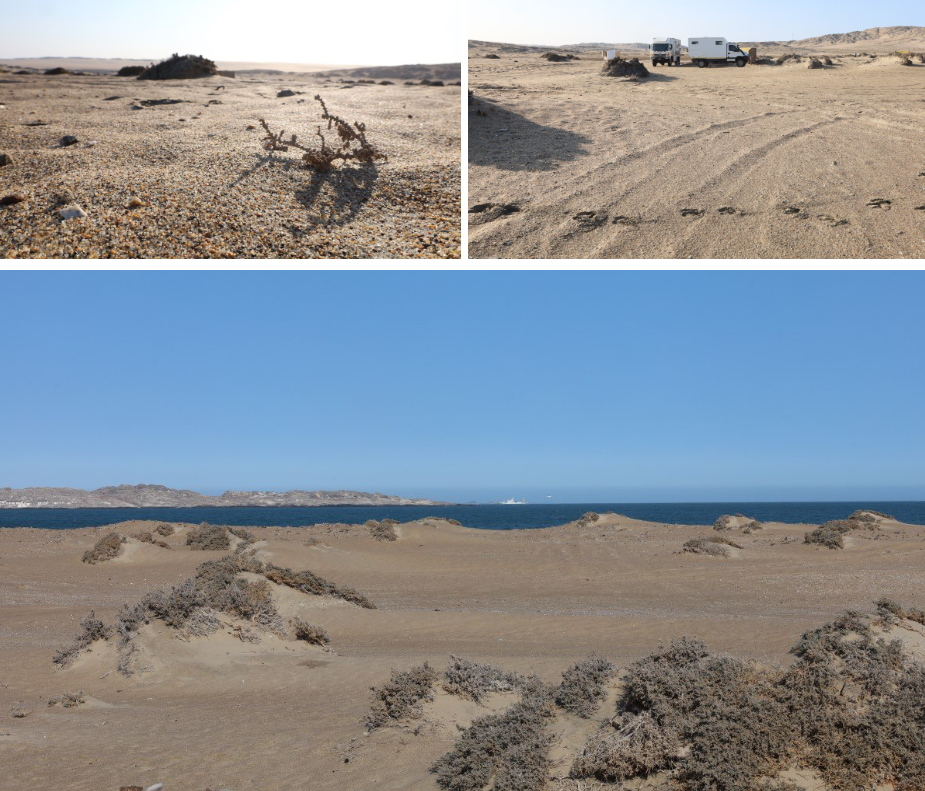
We took the same road out as we had taken in and, as we closed into Aus, we turned off to the viewpoint of the feral horses.
We spent a while there to watch these wild horses (and the lonely gemsbok) and were actually surprised they were so tame (or lethargic?). The handful of horses standing around at the viewpoint hide were not fazed at all when we were walking around them. It was as if they couldn’t be bothered to step aside or to run away. Further in the field at the waterhole a few of them got into some prancing action and a little bit of macho show off, but they were in general very placid.
When it was time to go, we said our goodbyes to the Shaws. They’re travelling faster than us in their Moglet and would be heading into another direction.
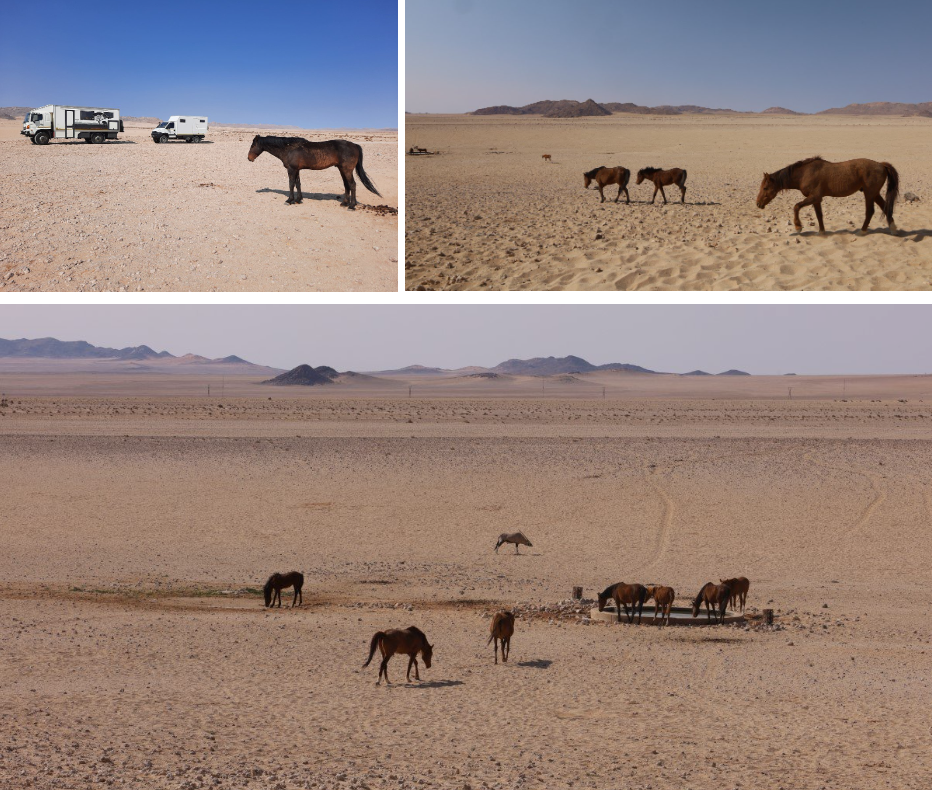
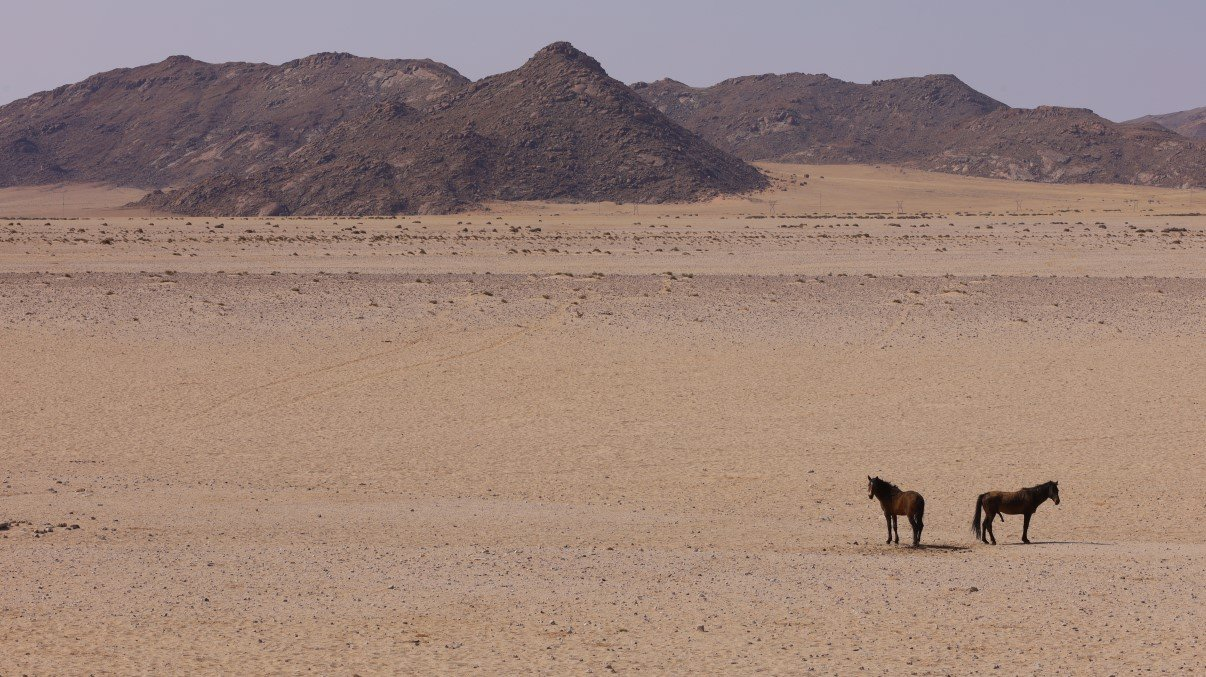
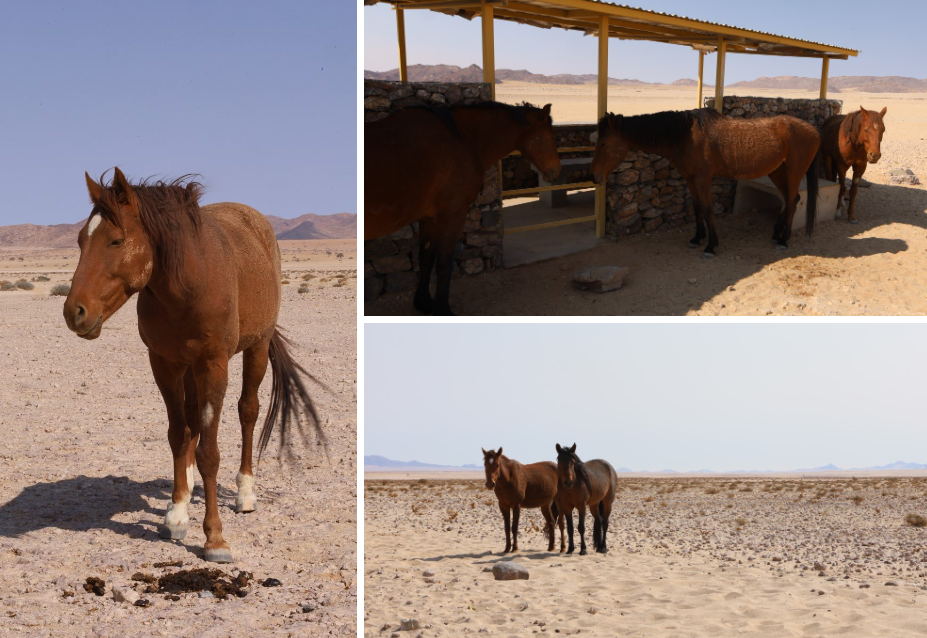
We continued to Aus, and just out of Aus we turned left towards Duwisib Castle.
Enjoy the video.
For more photos, clips and videos follow us on


Luderitz and Kolmanskop